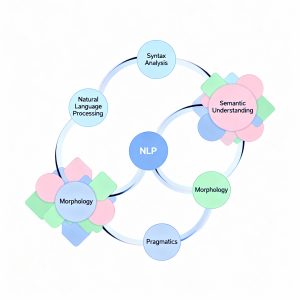Facebook Live’s journey to serving over a billion users was not a result of overnight innovation but a testament to pragmatic engineering and relentless iteration. The platform’s live video streaming began as a simple hackathon experiment, designed to test end-to-end latency. This prototype laid the groundwork for a system that would soon become a global standard for live video broadcasting.
The Foundation of Facebook’s Video Infrastructure
Facebook’s video infrastructure is a complex, distributed system designed to deliver seamless video experiences to users worldwide. Each component is optimized to ensure that content, whether it originates from a celebrity’s studio or a user’s mobile phone, reaches viewers with minimal delay and maximum reliability.
Fast, Resilient Uploads
The video journey starts with uploads. Facebook’s upload pipeline is engineered for both speed and resilience, accommodating everything from professional-grade streams to casual mobile videos. Uploads are chunked to enable resumability, reducing the cost and impact of network interruptions. Redundant paths and retry mechanisms ensure that partial failures do not disrupt the user experience. Early metadata extraction allows for real-time classification and processing, streamlining the recommendation process by clustering similar videos based on visual and audio cues rather than just metadata.
Encoding at Scale
Encoding is a critical, resource-intensive step. Facebook splits incoming videos into segments, encodes them in parallel across a fleet of servers, and then reassembles them. This parallelization dramatically reduces latency and enables the platform to serve billions of users simultaneously. Dynamic bitrate ladders are generated to support adaptive playback, ensuring that users on any device or network condition receive an optimized viewing experience.
Live Video as a First-Class Citizen
Live streaming introduces unique challenges compared to on-demand video. Content must be processed and delivered in real time, with minimal delay. Facebook’s architecture supports this by using secure RTMP connections from broadcast clients to Points of Presence (POPs), which then route streams through data centers for transcoding and global distribution. This setup supports interactive features such as comments and reactions, creating a feedback loop between viewers and broadcasters.
Scaling for Billions
Scale as a Baseline
Unlike traditional SaaS platforms, Facebook Live was built with global scale as a fundamental requirement. With over 1.23 billion daily active users, the system is designed to handle massive, unpredictable spikes in traffic, often triggered by viral events or breaking news. The infrastructure must perform consistently across diverse network conditions and geographies.
Distributed Presence: POPs and Data Centers
To maintain low latency and high availability, Facebook employs a distributed architecture of POPs and data centers (DCs). POPs serve as the first point of contact, handling ingestion and local caching to minimize latency. Data centers manage encoding, storage, and global dispatch of live streams. This separation allows for regional isolation and graceful degradation in the event of failures, ensuring uninterrupted service even during outages.
Overcoming Scaling Challenges
Key challenges in scaling Facebook Live include:
- Concurrent Stream Ingestion: Managing thousands of simultaneous broadcasters requires real-time CPU allocation, predictable bandwidth, and flexible routing to prevent bottlenecks.
- Unpredictable Viewer Surges: Viral streams can suddenly attract millions of viewers, necessitating dynamic resource allocation and robust load balancing.
- Hot Streams: Events like political debates or breaking news can dominate traffic, requiring rapid replication of stream segments and adaptive caching based on viewer location.
Live Video Architecture in Action
From Source to Viewer
Live streams originate from a variety of sources, including mobile devices, desktop cameras, and professional encoders. These clients use RTMPS for secure, low-latency transmission to POPs, which then forward the streams to data centers for processing. Each data center authenticates streams, transcodes them into multiple formats, and generates playback manifests for adaptive streaming.
Caching and Distribution
Unlike on-demand video, live content cannot be pre-cached. Facebook uses a two-tier caching strategy:
- POPs: Act as local cache layers, storing recently fetched segments and manifests to reduce data center load.
- DCs: Serve as origin caches, handling requests that miss at the POP level. This model supports independent scaling and regional flexibility, shielding core systems from traffic spikes.
Managing Viral Traffic
When a stream goes viral, thousands of clients may request the same segment simultaneously. Facebook mitigates this “thundering herd” problem with cache-blocking timeouts, ensuring that only the first request for new content reaches the data center, while subsequent requests are temporarily held back. This approach balances freshness with system stability.
Playback and Adaptation
DASH Protocol
Dynamic Adaptive Streaming over HTTP (DASH) is the backbone of Facebook Live’s playback pipeline. DASH divides live video into manifest files and short media segments, allowing clients to request the best quality segment based on current bandwidth. This stateless, cache-friendly model ensures smooth playback with minimal buffering and sub-second latency.
Role of POPs in Playback
Playback clients connect to POPs, not data centers, to fetch cached manifests and segments. This reduces latency, localizes traffic, and prevents regional outages from impacting the global user base. The two-tier caching system allows Facebook to handle unpredictable viral traffic efficiently and maintain high-quality service at scale.
Key Lessons in Building for Scale
Facebook Live’s success is rooted in several core engineering principles:
- Start Small, Iterate Fast: Early versions focused on rapid deployment and learning.
- Design for Scale: The architecture was built to handle billions from the outset.
- Embed Reliability: Redundancy, caching, and failover were integral from day one.
- Enable Flexibility: The system supports diverse features and adapts quickly to new demands.
- Expect the Unexpected: The platform is resilient to viral spikes and global outages, treating them as routine rather than exceptional.
Conclusion
Facebook Live’s path to a billion users showcases the power of deliberate engineering and scalable architecture. By prioritizing speed, reliability, and adaptability, the platform has set a new standard for global live video streaming, ensuring that every broadcast—whether from a celebrity or a casual user—reaches its audience without compromise.
Read more such articles from our Newsletter here.



